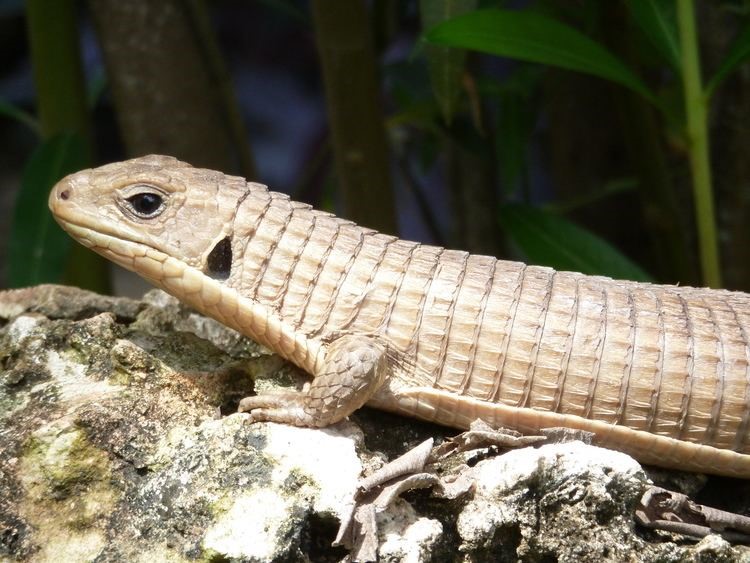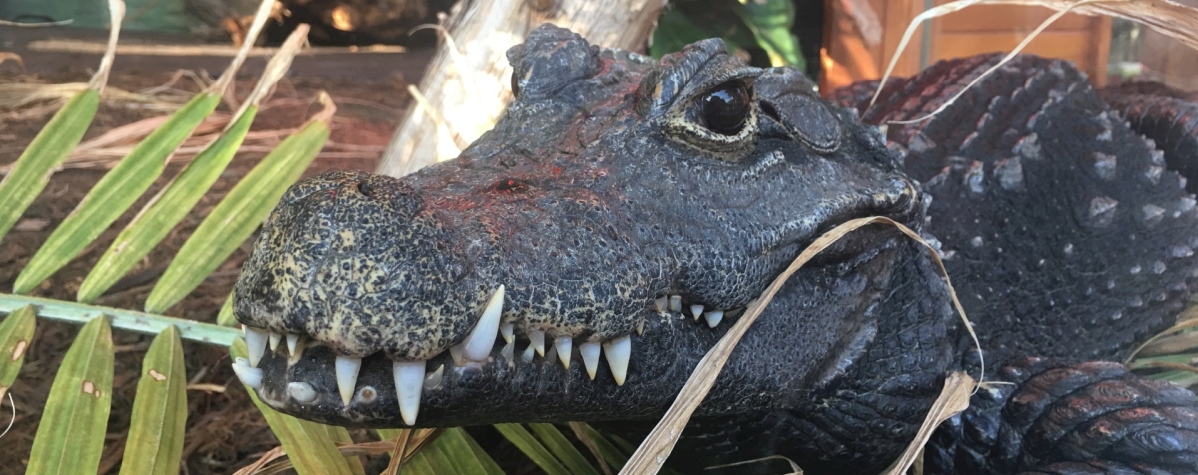Plated Lizard
Scientific Classification 
| Species | Gerrhosaurus major |
| Kingdom | Animalia |
| Phylum | Chordata |
| Class | Reptilia |
| Order | Squamata |
| Family | Lacertilia |
| IUCN Status | Not evaluated |
Appearance and lifespan
Known as the African Plated Lizard or Sudan Plated Lizard, this reptile can be anywhere from 30 to 70cm (11 to 27 inches) long. It has a black body with yellow spots, the belly is a dark brown with the chin and throat usually yellow or cream. The Plated Lizard is large and stout with a cylindrical body. It has a short head, large eyes, and a tail that is usually twice the length of its body. Although it has a solid body, it has smaller legs than iguanas giving the limbs a delicate appearance. This reptile has rough scales on its head. The scales on its back have pronounced keels, and the belly scales are arranged in ten rows. There are deep grooves that run the length of the body which are low on its sides and contain skin not covered with plated scales. These grooves function as expansion joints for a female carrying eggs or for distension after a meal.
Plated lizards can live over 20 years in the right conditions.
Behavior and reproduction
The Plated Lizard is active during the day. It is considered a shy animal, though males will sometimes attack one another for territory protection. It will not usually bite when threatened and would rather use its plated tail in defense. As an escape tactic, the plated lizard will run a distance than suddenly halt, with its tail raised, to confuse the pursuer. It will also wedge itself into a crevice to escape a predator. This reptile lives in underground tunnels, which it will sometimes share with a snake or mongoose.
The female usually lays two, but can lay up to four large eggs in damp soil. After being laid, the eggs take three to four months to hatch. Hatchlings are 10 to 15 cm (3.9 to 5.9 inches) in length.
Ecology and habitat
The Plated Lizard is widely distributed in eastern and southeastern Africa. Most the population may be found in eastern and southeastern Africa, from Ethiopia to South Africa in the savanna and steppe areas of the sub-Saharan. It is a ground-dwelling lizard and lives in the semi-arid steppe areas, or flat parts of Africa. It prefers temperatures ranging from 24 to 29 °C (75 to 85 °F) and uses burrows and termite mounds to avoid the sun in extreme heat. Although this plated lizard can sometimes be found in warmer, humid climates, they have not been known to enter rain forests.
This reptile is omnivorous and will eat insects, smaller reptiles, birds and vegetation.
Food at the Zoo
At the Zoo, the plated lizards eat insects such as crickets, mealworms, mealworm beetles, wax worms, grasshoppers, caterpillars and fruit like bananas, strawberries, cantaloupe, peach, apple, tomato and mixed vegetables.
Threats
According to the World Conservation Union, one species of plated lizard is already extinct. In addition, five species of plated and girdled lizards are Vulnerable, and five species are Near Threatened. Many of them live in tiny areas that are now being developed for other uses. Several plated lizards are also very beautiful, which has made them quite desirable for the pet trade.
Did you know?
- Plated lizards are covered in large scales called osteoderms - scales that have bone in them.
- Plated lizards also have huge ears compared to most reptiles.
- There are 6 species of Plated lizards occurring in the African savannah.


